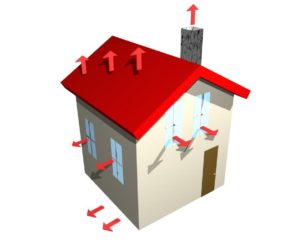Thermal Guard Max
Introducing our patented and new thermally insulated iron door technology
Thermal Guard Max – Abby’s Thermally Insulated Iron Door
Recognized for providing premium, aesthetically appealing, highly functional and innovative wrought iron doors, we at Abby also take innovation in iron doors to the next level by introducing to you our patented and new thermally insulated iron door technology Thermal Guard Max.
Using this technology, we aim to create doors with full thermal breaks and high energy seals specifically engineered to reduce transfer of heat significantly in homes and offices.
This technology is exclusively designed to help home and commercial building owners enjoy a comfortable environment indoors during the winter time especially when it becomes extremely cold.
 Understanding Heat Transmission
Understanding Heat Transmission
Retaining the ideal room temperature during the winter time can be difficult because of heat transmission.
Heat is usually transferred in four forms: radiation, convection, conduction and condensation.
Conduction and condensation are the two most common forms of heat loss in homes and especially in those located in extremely cold climate regions.
Let’s take a look at how these forms of heat loss occur and affect your home:
Heat transfer through solid objects is known as conduction. This form of heat loss is common in homes that have regular iron doors. This is because iron is a good conductor of heat which means when there is heat around, it helps carry and transfer air quickly from the warm area to the cold area trying to seek balance. In other words, indoor heat is transferred directly through uninsulated iron doors to the exterior of the house.
Homes with glass doors also experience heat loss but through condensation. Condensation occurs when warm and moist air comes into contact with cold surfaces like glass. It is the conversion of water vapor in the air back into liquid form. Like glass, metal is also a poor insulator. This means if your glass door has a metal frame, condensation will occur on the frame as well. Condensation also occurs on other uninsulated parts of the door, such as hinges and locks.
The science behind it is simple. The greater the difference in temperature, the faster the heat flows from warmer areas to colder ones through uninsulated objects. And when the heat loss is greater than the heat output, it takes more time to achieve optimum room temperature, contributing to your high energy bills.
Keeping this in consideration, we have designed our Thermal Guard Max Insulated Iron Doors.
Thermal Guard Max – Iron Doors with Thermal Breaks
Improving insulation of your home/office is the best way to avoid heat loss. Many home owners focus on replacing windows with better insulated options, so they often neglect doors. However, this is a vital mistake for 18 to 20 percent of heat loss occurs through them.
Efficient and thermally insulated doors are a must to control heat conduction. Replace your regular doors with our patent Thermal Break Heat Control TM Iron Door. It is the best way to make your home energy efficient and cozy warm during the winter time.
Our Thermal Guard Max Iron Doors feature thermal breaks. Thermal Break, also known as thermal barrier, is recognized as an element of low thermal conductivity that helps reduce/prevent the flow of thermal energy between objects.
All parts of our Heat Control TM iron doors are embedded with thermal breaks which includes:
✓ Rails
✓ Frames
✓ Kick panels
✓ Threshold
✓ Stiles
✓ Jamb
It is ingeniously engineered to help retain optimal room temperature, quickly translating into big energy savings and low utility bills.
For more information or assistance, contact us at 7708138078. Our team of friendly representatives is just a call away. Get in touch with us today!

